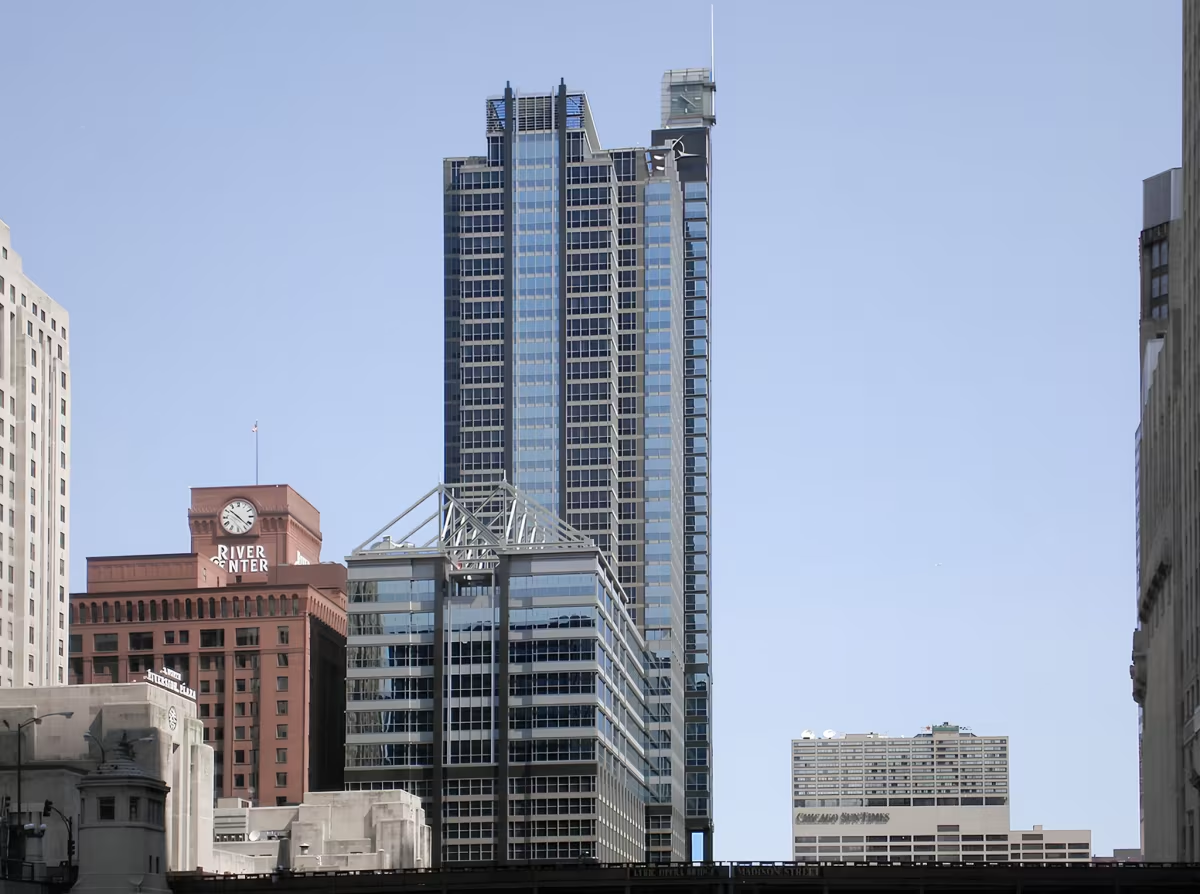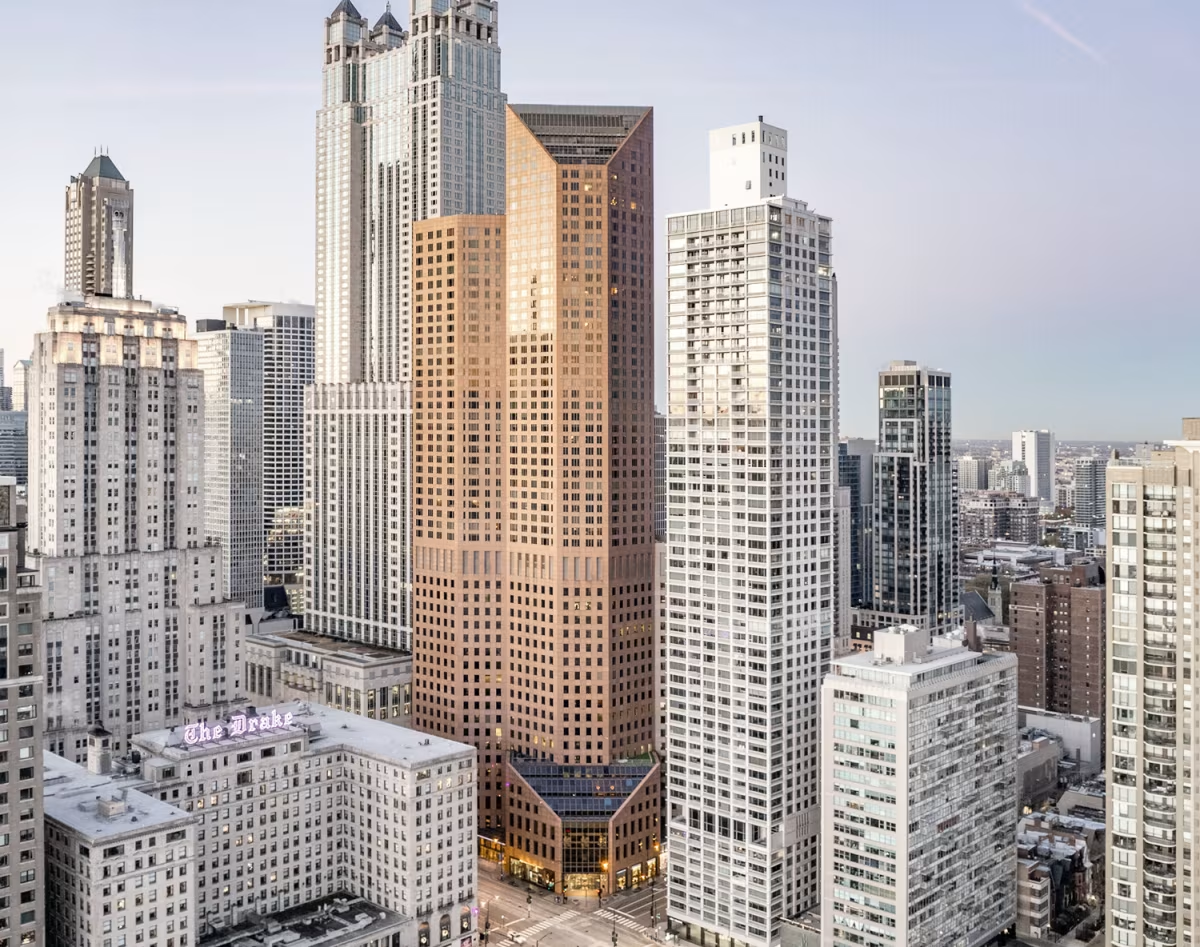Boeing International Headquarters vs One Magnificent Mile Building


Comparing the Boeing International Headquarters and the One Magnificent Mile Building is interesting because they both rise in Chicago, IL, yet they were conceived by two different design teams, Perkins and Will and Skidmore, Owings & Merrill, and were completed at different points in time. They were finished more than 7 years apart.
This contrast within the same city allows us to see how different creative minds interpreted the evolving needs of Chicago across time.
Let's take a closer look!
Height & Size
The One Magnificent Mile Building is clearly the larger tower of the two, both in terms of height and number of floors. It rises to 673ft (205m) with 57 floors above ground, while the Boeing International Headquarters reaches 561ft (171m) with 36 floors above ground.
Of course, each project may have faced different briefs or regulatory constraints, which we don't really know about and could also explain the outcome.
Architectural Style
Both the Boeing International Headquarters and the One Magnificent Mile Building were designed in line with the aesthetic conventions of the Postmodernism style.
At the time, this style was at the height of its popularity. So both Perkins and Will and Skidmore, Owings & Merrill followed what was in many ways expected of them, producing designs that fit comfortably within contemporary architectural norms, rather than breaking with convention.
Uses
The One Magnificent Mile Building follows a mixed-use model, combining retail, commercial and residential. In contrast, the Boeing International Headquarters has remained primarily commercial.
The One Magnificent Mile Building offers 182 residential units.
The Boeing International Headquarters also provides 435 parking spaces.
Structure & Facade
Both towers share the same structural solution, a Frame system.
A frame structure uses a grid of columns and beams to carry the building's loads. This frees the walls from structural duties, allowing for flexible floor plans and larger windows.
However, when it comes to the facade, both buildings use different approaches. The Boeing International Headquarters uses a Curtain Wall facade, while the One Magnificent Mile Building uses a Modular facade.
A Curtain Wall facade like the one seen in the Boeing International Headquarters uses a lightweight glass curtain wall hung from the structure, while a modular facade like the one seen in the One Magnificent Mile Building employs prefabricated panels, often mixing solid surfaces with smaller windows.
| Boeing International Headquarters | One Magnificent Mile Building | |
|---|---|---|
| Perkins and Will | Architect | Skidmore, Owings & Merrill |
| 1988 | Construction Started | 1978 |
| 1990 | Year Completed | 1983 |
| Postmodernism | Architectural Style | Postmodernism |
| Commercial | Current Use | Mixed |
| 36 | Floors Above Ground | 57 |
| 171 m | Height (m) | 205 m |
| Frame | Structure Type | Frame |
| Steel | Vertical Structure Material | Concrete |
| Steel And Concrete | Horizontal Structure Material | Concrete And Steel |
| Yes | Facade Structural? | Yes |
| Glass, Steel, Aluminum | Main Facade Material | Granite, Glass |
| Perkins & Will | Structural Engineer | Fazlur Rahman Khan |
| IL | State | IL |
| Chicago | City | Chicago |
| 100 North Riverside Plaza | Address | 940 980 North Michigan Avenue |